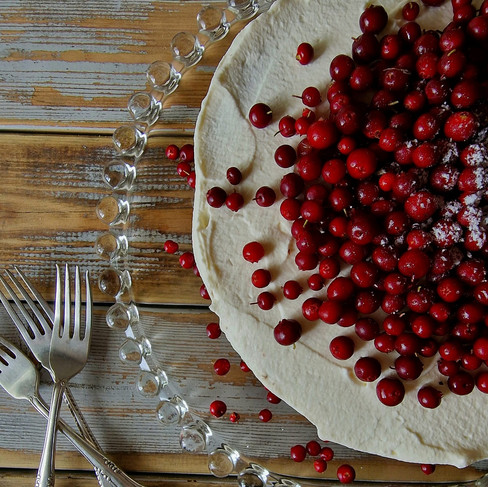
14 September is a special day on the Nordic runic calendar, the primstav. It's not a Holy Day will find celebrated in many places anymore in the Nordics and I think that is such a shame!
Traditionally it was a day for moving from the "seter" (summer grazing farm) back down to the winter pastures and barns to keep the animals safe and warm through those cold days. In many places it would still have been warm with the late summer days lingering on, fields still full of wild flowers and rich pasture that needed to be preserved.

Gates and fences would have been closed and everything prepared for the winter months that were assuredly on their way (winter is coming!). The seter was a place where many farming families spent their entire summer. All the animals were moved there and farm work took place as normal with dairy production and baking all happening at the seter itself. Some of the most delicious and rich traditional dishes are from the seter and those times of abundance with their rural peace and long summer days.

After closing up the seter one of the most important tasks was leave an offering of food for the huldrefolk, the Nordic fairies and shapeshifters, who would take care of the buildings whilst the seter was empty. It was important to keep the huldra happy because they could be unpleasant and destructive if upset and the seter would be unattended for the long winter months.

So what about the cake, I hear you exclaim!
I wanted to include a recipe with this post to celebrate the day and as the focus is on the grazing animals it's only right it should include the richest cream. But throughout the forests in Norway at this time lingonberries are abundant and are a bright and colourful addition to any dish. Honey is being harvested too and at all the farmers markets we have been to recently, the honey producers are selling jars of the golden liquid, reminiscent of summer days and wild flowers with enticing flavours of raspberry, ling and summer meadows.
If you can't get lingonberries, the ideal substitute would be cranberries, but any other berry will work just as well with the delicate flavour of honey in the cake and cream.
Bløtkake with lingonberries and honey
Serves 8 people
Ingredients
4 eggs
170g /6 oz sugar
2 tablespoons honey
60g / 2 oz plain, all purpose flour
70g / 2.5 oz potato flour/potato starch
1 teaspoon baking powder
175g / 6.25 oz lingonberry jam
To finish:
500ml / 17 fl oz double or heavy cream
2 tablespoons honey of your choice. I chose a local heather honey from the same forest as my lingonberries
100g / 3.5 oz fresh lingonberries
Method
Preheat the oven to 175C / 345F
Grease and base line two 20cm cake tins.
Put the eggs, sugar and honey in a large bowl and whisk together until light and fluffy and pale in colour. If you lift the whisk up it will hold a trail for the count of 3 seconds.
Sift together the flour, potato starch and baking powder and fold into the egg mixture using a figure of eight motion.
Divide the batter between the cakes tins and bake in the centre of the oven for about 25 minutes until a light golden brown and rebounds to a light touch.
Cool the cakes in the tins for 10 minutes before running a blunt ended knife around the edges and turning them out to cool completely on a wire rack.
Whisk together the cream and honey until it forms soft peaks.
To assemble the cake, place one half on a pretty plate and cover the top evenly with the lingonberry jam.
Top the jam with a nice thick layer of the whipped cream and place the second cake half on top. Use the rest of the cream to cover the top and sides of the cake.
Decorate with the fresh lingonberries
Refrigerate for a few hours before serving as this allows the flavours to develop. Traditionally bløtkake is made several days before using so that the juice from the fruit makes the cake soft, hence the word "bløt" which means damp.
Vær så god!
If you are a fan of Nordic living and Scandinavia, why not join the Living a Nordic Life Facebook group. We'd be delighted to meet you there.
.png)




Kommentare